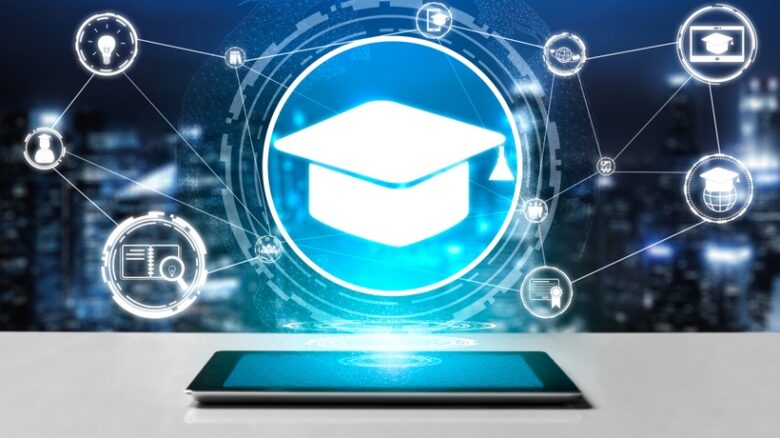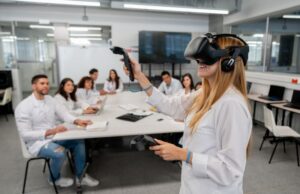Education technology, also known as Ed Tech or Education Technology, has revolutionized the way people learn around the world. Digital platforms and tools are replacing or complementing traditional methods of teaching that heavily relied on textbooks and chalkboards. The advancement of technology has allowed students to no longer rely on static content or physical classrooms. Students can now access dynamic, interactive and tailored learning experiences. Ed Tech’s rise has allowed for a variety of learning styles, interests, and paces to be catered to. A personalized learning approach is an educational strategy that tailors learning experiences for each student based on their unique strengths, needs, and preferences. This approach acknowledges that students are different and learn at different rates. Some students may be able to grasp concepts very quickly, while others need additional time and resources. Each learner can follow their own path using the content and tools they find most appealing. EdTech is a key player in this process, offering adaptive learning platforms and real-time feedback mechanisms. They also offer a variety of content delivery formats, which can be tailored for each student. Data collection and analysis is one of the most powerful ways EdTech can enable personalized learning. Data is collected by learning management systems, educational applications, and online assessments. These data are then analyzed in order to determine strengths, weaknesses, and areas of interest. Teachers and educators are able to use these insights in order to create personalized learning plans for each student. If a student struggles with algebra but excels at geometry, then the system will suggest specific exercises and extra support for algebra while encouraging more challenging geometry challenges. Adaptive technologies are the cornerstones of personalized education. These platforms utilize artificial intelligence and machine-learning algorithms to adapt content in real time, based on the progress of learners. The system can present more challenging material if a student performs well. If a student struggles, the platform may offer alternative explanations, tips, or remedial content. This responsiveness helps learners to remain engaged and not get bored or overwhelmed. EdTech platforms like Khan Academy, IXL, and DreamBox offer adaptive learning experiences that are tailored to each individual’s performance. Ed Tech empowers the student by giving him or her more control over when and how they learn. Students can select topics that they are interested in, set their learning goals, and track their progress independently with digital content. This autonomy encourages ownership and responsibility, which are essential components for lifelong learning. In a personalized environment, students no longer receive information passively but are active participants in their education. Students can learn at their own pace and revisit difficult concepts. They can also explore areas that interest them. The rigidity of traditional classrooms can be a barrier to learning. EdTech removes these barriers by creating flexible learning environments. Students can learn anywhere and anytime with online courses, video lessons, interactive simulations, and mobile apps. This flexibility is particularly beneficial to students with different needs, such as those with disabilities or language barriers. These flexible learning environments are conducive to personalized learning, as students can adapt the content they learn in order to suit their learning style and circumstances. Ed Tech is not only focused on the needs of students but also helps teachers deliver personalized instruction. Digital tools can help teachers manage classrooms better by automating administrative tasks and providing insight into student progress. Teachers can spend more time with their students and provide targeted support. Teachers can also receive training from professional development platforms on how to integrate effective technology into their teaching methods. This continuous support allows educators to stay current with the latest tools, techniques, and methods for personalizing education. Ed tech encourages collaboration and peer learning, both of which are important components of a comprehensive educational experience. Online discussion boards, group projects, and virtual classrooms, as well as collaborative tools such as Google Docs, enable students to share their knowledge with each other while still following their own learning paths. These platforms allow for real-time feedback and idea sharing as well as joint problem solving. This can improve understanding and foster community. Learning in isolation is not personalized learning. Instead, it’s learning in a manner that suits the individual and still benefits from group dynamics. EdTech has revolutionized education by making personalization not only practical but also scalable. Ed Tech uses adaptive technologies, real-time data, diverse content, and flexible delivery methods to create an environment that allows every student to learn in a manner that best suits their needs and preferences. It is now possible to achieve the shift from traditional one-size-fits-all instruction to personalized and student-centered learning through innovative technologies. EdTech’s potential to transform education will only increase as it continues to develop. 1. What does personalized learning mean in EdTech? Ed Tech personalized learning is the process of customizing content and pace to meet each student’s needs, preferences, and abilities, using technology-driven tools. 2. What is the role of EdTech in supporting teachers in personalizing learning? Ed Tech offers teachers data-driven insights and automates administrative duties. It also provides training resources that allow them to customize instruction and spend more of their time on individual student needs. 3. Can personalized learning benefit students outside of the classroom? Students can access educational materials at any time and anywhere via mobile apps and online platforms. This allows for self-paced, interest-driven, and flexible learning outside of traditional classroom settings. 4. What are the challenges of implementing personalized education with EdTech? Some of the challenges are ensuring that all students have equal access to technology and training teachers in an effective manner, maintaining student engagement, and protecting data privacy. 5. Does personalized learning work for all age groups of learners? Learning can be tailored for all learners, including young children and adults. Content and platforms that are age-appropriate and tailored to the learner’s developmental and educational needs will help us achieve this.Understanding Personalized Learning
Data-driven Insights for Individualized Instruction
Adaptive Learning Platforms and Tools
Empowering Students to Take Control
Flexible Learning Environments
Teacher Support and Development
Collaboration and Peer-to-Peer Learning Opportunities
Conclusion
FAQs




